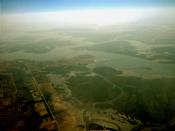Viraj Patel ID:0762075
The loss of biodiversity in the ocean
In depths look at Mangrove Forests
Mangrove forests comprise of a very small percentage of around 0.12% of the total land area on earth. They are usually found on the coastal waters. Because of their adaptations, these plants are usually able to survive in places that many other types of plants cannot survive (McNally 2011). It is estimated that around 44% of the world population lives within 150km of the coastal regions (Cohen 1994). This includes almost half of the whole population of the world and due to increased globalization, these people are forced to clear the mangroves for coastal development and also to get resources and to practice aquaculture.
The mangrove forests are a good source of fuel and timber therefore they can get a lot of income from these products. This has greatly affected the habitats of many other species among many other disadvantages of the depletion of the forests (McNally 2011).
Studies show that approximately 26% of mangrove forests are depleted so as to acquire timber and fuel wood (Valiela, Bowen and York 2001). The shrimp culture caters for approximately 38% of mangrove clearing while aquaculture is responsible for 14% (Ellison 2008). in the coastal areas of India, more that 40% of the mangrove areas have been converted to development areas and areas of aquaculture (Valiela, Bowen and York 2001). The mangrove forests are also the starting point for the coral reefs and these are also important for the survival of many fish species. They also trap sediments that serve as food for the fish hence their harvest will mean death to many fish (McNally 2011). Approximately 80% of the fish species have been proven to depend on the mangrove forests for survival whether it is directly...


